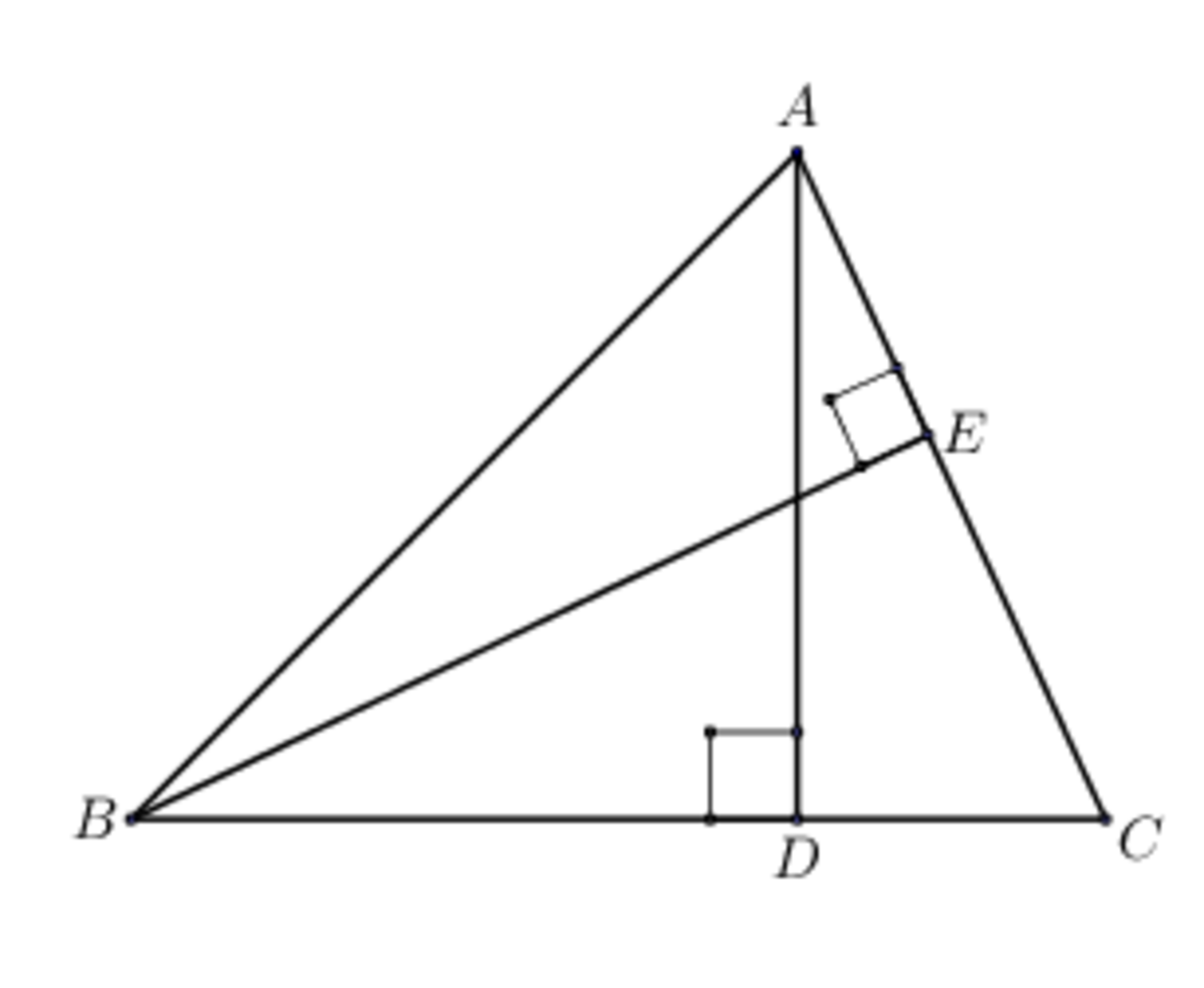A geometry problem by Wildan Bagus Wicaksono

Given the . The lines and are each perpendicular to the sides and and intersect at point . Find the value
The answer is 1.
This section requires Javascript.
You are seeing this because something didn't load right. We suggest you, (a) try
refreshing the page, (b) enabling javascript if it is disabled on your browser and,
finally, (c)
loading the
non-javascript version of this page
. We're sorry about the hassle.
See the picture above. △ A H E opposite to △ B H D means ∠ A H E = ∠ B H D . ∠ A E H = ∠ B D H = 9 0 and ∠ E A H = ∠ D B H . This means that △ A H E is similar to △ D B H . Based on equivalent comparisons on two similar triangles:
B H A H = H D H E or A H ⋅ H D = B H ⋅ H E .
So, ( B H ⋅ H E A H ⋅ H D ) 1 0 = 1 1 0 = 1 .